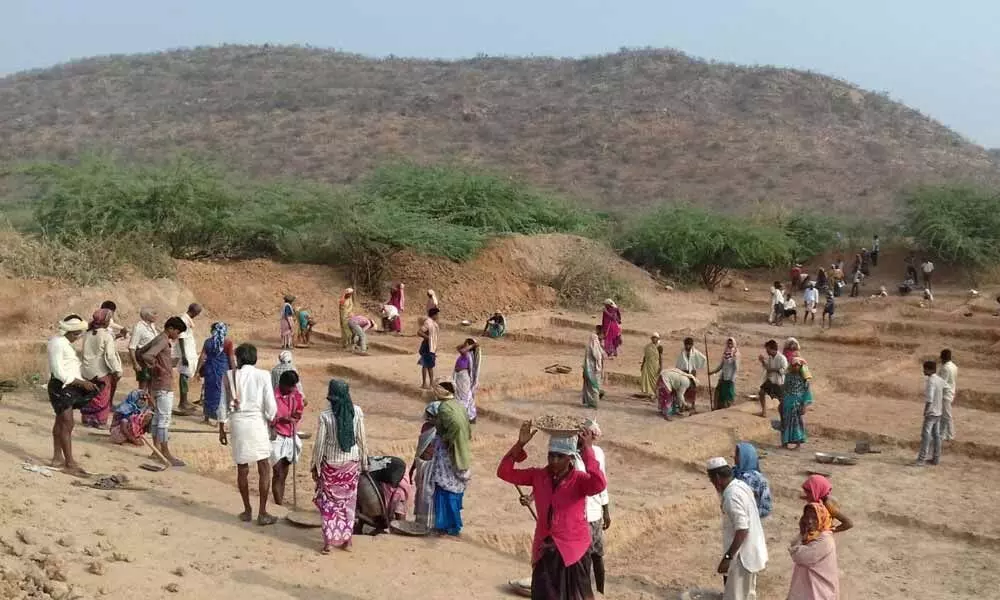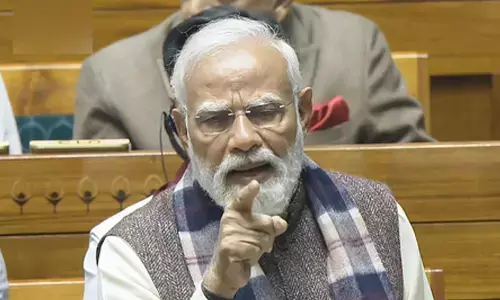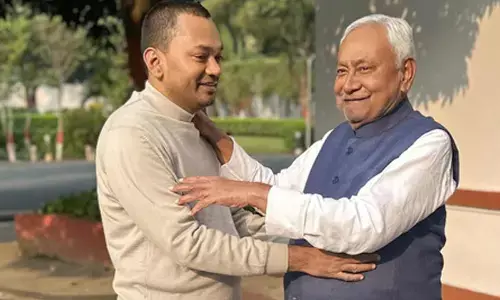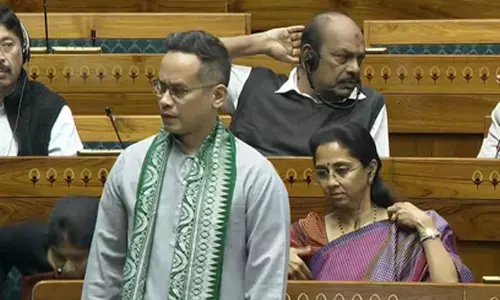New software ends flexibility in MGNREGS

Slash in budgetary allocation for MGNREGS decried (File picture)
- The state has now migrated to from TCS software to NIC-designed one
- Now there is no possibility of calculating staggered work as one unit to pay a day’s wage and consider it as one person-day
- If a worker does only half-a-unit work in a day, it is considered one person-day irrespective of wage
- Job-card holders in a family can’t get more than 100 person-days in a year
Ongole: The workers under the Mahatma Gandhi National Rural Employment Guarantee Scheme (MGNREGS) in Andhra Pradesh from now on have to work more on the same day to receive the average wage. The change of software used for implementation of NREGS from the one made by TCS to that of National Informatics Centre (NIC) limits the job-card holding family to 100 person-days only.
Andhra Pradesh is one of the last few states in the country to migrate to the NIC software. Up to now, the state government is using the TCS software, in which there are certain advantages in the field. After a day's work is done by a worker, the field staff estimates the volume of the work and divides it by the volume of the work required to pay the full day wage.
By taking the quotient, the staff pays the wage to the worker. For example, the average wage for a worker in Prakasam district for doing one unit of work is Rs 245. If one worker is able to do just half-a-unit of the work, he receives only Rs 122.50 as his wage for that day.
Also, there is another advantage in the old software, in which the field staff can calculate two or three days' work as one unit and pay the wage for that person-day. For instance, the worker who is able to do just the half-a-unit work in a day can complete the other half the next day to take the wage of Rs 245 and register it as one person-day. By this calculation, the job-card holders in a family are attending more than 100 days work, but are receiving the wages for 100 person-days only.
With the software by NIC, which is being used by other states for a long time, the worker gets the wage for the work he does. He cannot club the work done on multiple days, and count it a single person-day to claim 100 person-days per job card. Also, once the members on the job card achieve 100 cumulative attendances to the work, the family cannot get the work for the year.
A senior officer in the District Water Management Agency, the agency that is implementing the MGNREGS, explained that with the migration to new software, the government cannot take up the works under the scheme as it pleases. He said that they can't take up works like threshing floors, and should rename the works of constructing Rythu Bharosa Kendras as Agri Produce Storage Godowns, YSR Health Clinics to Bharat Nirman Seva Kendras, etc., if the Centre has to ensure material component under the scheme.
By using the new software, he explained that the wage component will be met earlier than in the past and the workers should be very proactive and do more work by adapting early to get the full wage. He said that the migration to new software has been done recently and the training for the staff on estimations are going on in the state now.
















